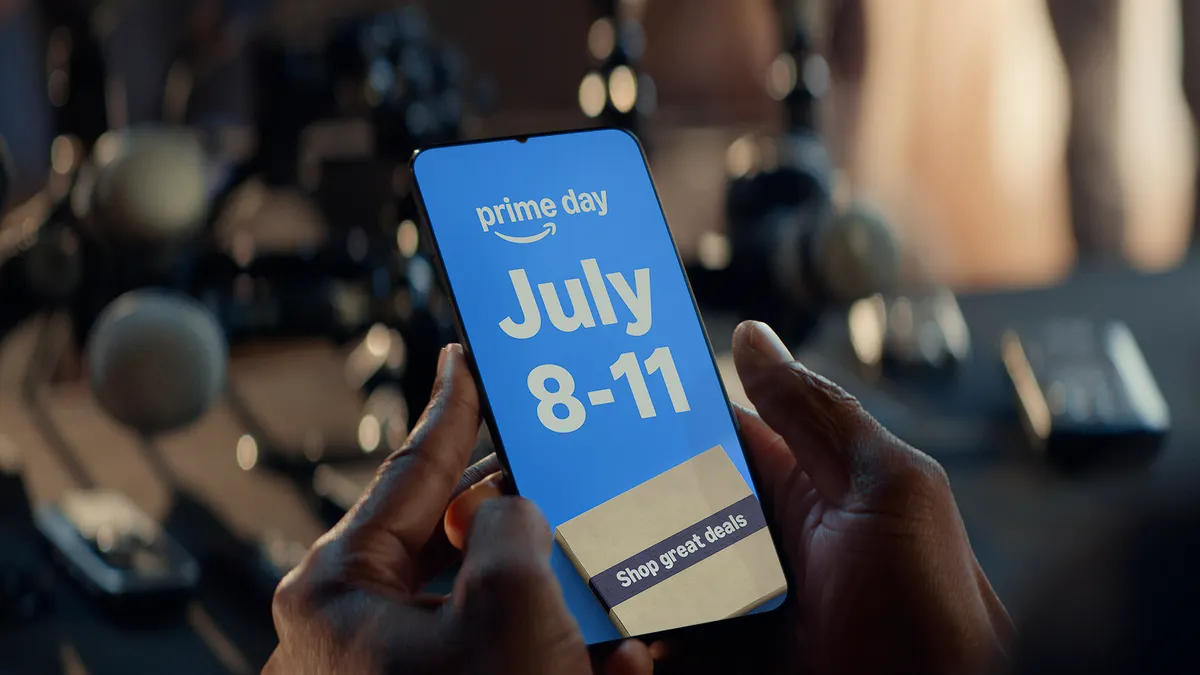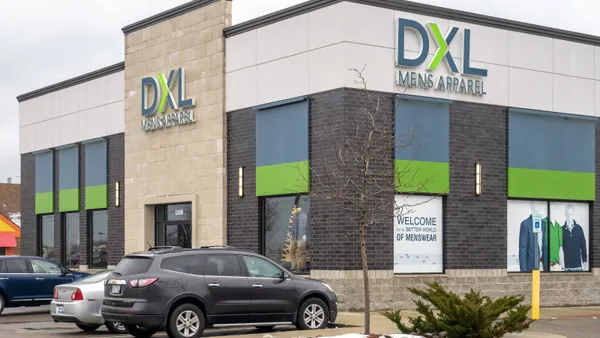Tuesday marks a decade since the launch of Amazon's iconic Prime Day savings event, which has consisted of two deal days for Prime members since 2019. Last week, however, the e-commerce company held its longest sale ever with four days of discounts from July 8 to July 11.
Amazon said Prime Day 2025 resulted in record sales and more items sold compared to any previous four-day period that included a Prime Day event, according to a company press release Saturday. Amazon declined to provide Retail Dive with specific numbers related to its record sales. In previous years, the company has also provided few details in its post-event press releases.
Record sales when compared to a previous period with fewer discount days isn’t a huge surprise to some experts, though.
“Clearly it's a longer event, so it should be record sales,” RMW Commerce Consulting CEO and founder Rick Watson told Retail Dive via email. “I mean, this makes sense. Anything else would be a big disappointment.”
But some industry reporting early on in the event last week created speculation about whether or not sales would be down this year.
Specifically, early client data from Momentum Commerce shared with Retail Dive showed that Amazon sales were down 41% compared to the first day in the 2024 Prime event. However, the company (which says it manages more than $7 billion in digital commerce sales annually) in the same report also predicted 9.1% total growth across Amazon’s expanded four-day event.
Given the extended discount period for Amazon, Momentum Commerce noted in a Friday press release that it had expected to see softer demand in the first two days and stronger demand year over year on the third and fourth days. Final numbers from Momentum Commerce released Monday showed “total sales growth of 4.9% compared to the combined performance of 2024's two-day Prime Day and the two days immediately following.”
A look at consumer behavior for the period sheds light on priorities for shoppers this season.
“This year's Prime Day event was shaped by a variety of forces, including ongoing economic pressures and a new four-day format,” Numerator analyst Amanda Schoenbauer said in a statement shared with Retail Dive. “We saw a shift in shopping behaviors, as consumers prioritized lower priced everyday essentials over big-ticket purchases.”
Amazon’s average order size on Prime Day 2025 was $53.34, per data from Numerator’s Prime Day tracker. Nearly two-thirds of households shopping Prime Day placed two or more orders, with average household spend reaching about $156.37, per Numerator.
Other third-party data also suggests a drop in average order total.
“Extending the event garnered greater total, but lower daily average, sales volumes compared to last year, according to preliminary NielsenIQ (NIQ) data,” Jack O'Leary, director of e-commerce strategic insights at NielsenIQ, told Retail Dive in an email. “Extending the event to four days benefits Amazon as it means the opportunity to drive more advertising revenue is twice as long.”
Several other brands and retailers beyond Amazon also conducted online sales during the period. Walmart’s discount event this month marked an extension for the mass retailer, now at six days compared to four in 2024. Additionally, Target held its weeklong Circle Week savings event with a heightened focus on back-to-school shopping, with extra discounts for teachers and students.
U.S. retailers drove about $24.1 billion in online spend (30.3% growth year over year) during Amazon’s Prime Day event this year, according to data from Adobe shared with Retail Dive on Saturday.
Price-sensitive consumers also turned to buy now, pay later during the Prime Day event period, with BNPL making up 8.1% of online orders, demonstrating an increase from 7.4% in 2024, per Adobe.
While success during the sales event can vary based on a brand’s specific goals, Prime Day is a way to showcase the value of the Prime membership for Amazon.
“So if Amazon adds Prime subscribers or increases the shopping activity of its existing subscribers across categories, it's a success for them,” RMW Commerce’s Watson told Retail Dive.
“What I find with these days is Amazon always declares victory one way [or another],” Watson noted, adding that any third-party data is informed guesswork.















